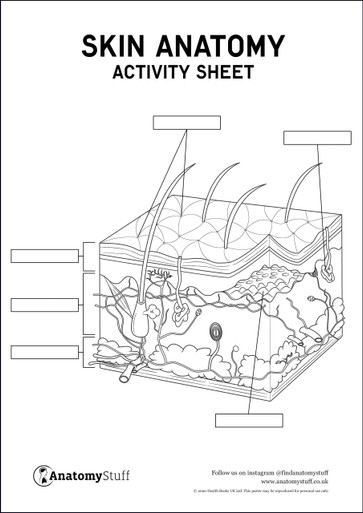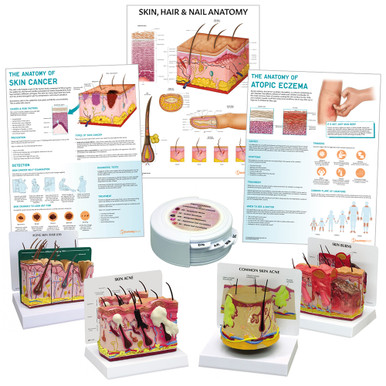Written by: Liz Paton, MSc
Skin Anatomy Overview
The skin is the largest organ in the body and its role is to protect our body and hold all of our internal structures together. The skin also helps to regulate our body temperature and provides us with the sense of touch.
Skin Anatomy
The skin consists of three major layers. The epidermis is the top layer which is protective and is able to regenerate fast. It contains pigment cells, keratin, it can make vitamin D when exposed to sunlight and also produces sweat which helps to regulate body temperature and dispose of unwanted chemicals in the body. The epidermis makes new skin cells and old skin cells flake off. The epidermis contains a substance called melanin which protects our skin from ultraviolet rays from the sun.
The dermis lies beneath the epidermis and contains most of the skin receptors, capillaries, hair follicles, oil glands and nerve endings. This part of the skin is made from collagen which is a protein that provides structure to our skin. The dermis contains lots of blood vessels which help to keep the skin alive and healthy.
The last layer of the skin is the subcutaneous layer, which helps with insulation, storing energy and absorbing shock. This contains subcutaneous fat, larger blood vessels and connective tissue, which helps to attach the skin to the tendons and muscles below.
Skin Glands
Our skin contains sebaceous glands (oil glands) and sweat glands which are contained in the dermis. Sebaceous glands produce a substance called sebum which keeps our skin lubricated, waterproof and provides protection for our skin. Sweat glands are also contained in the dermis and are important to control the body’s temperature.
Temperature Regulation
As mentioned before the skin helps to control body temperature and sweat glands can help with this. There are other structures involved in temperature control such as blood vessels and nerves. The hypothalamus is a part of the brain which send signals to structures of the body to maintain a normal body temperature.
When the body is overheated and needs to cool down, the sweat glands release sweat which evaporates causing the skin to cool down. Another process of cooling the body down is through vasodilation where the blood vessels become wider to increase blood flow to the surface of our skin and releases heat through heat radiation.
When the body is too cold and need to warm up a process called vasoconstriction takes place. This is where the blood vessels become narrower and heat is retained inside the body. Thermogenesis is when the body produces heat is different ways. An example of this is when our muscles shiver which produces heat.















